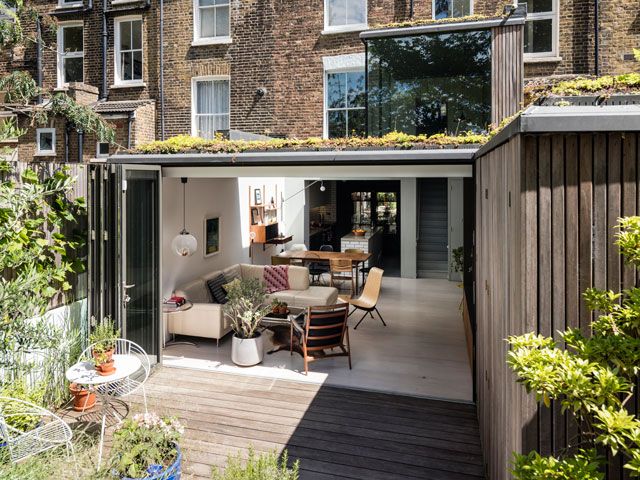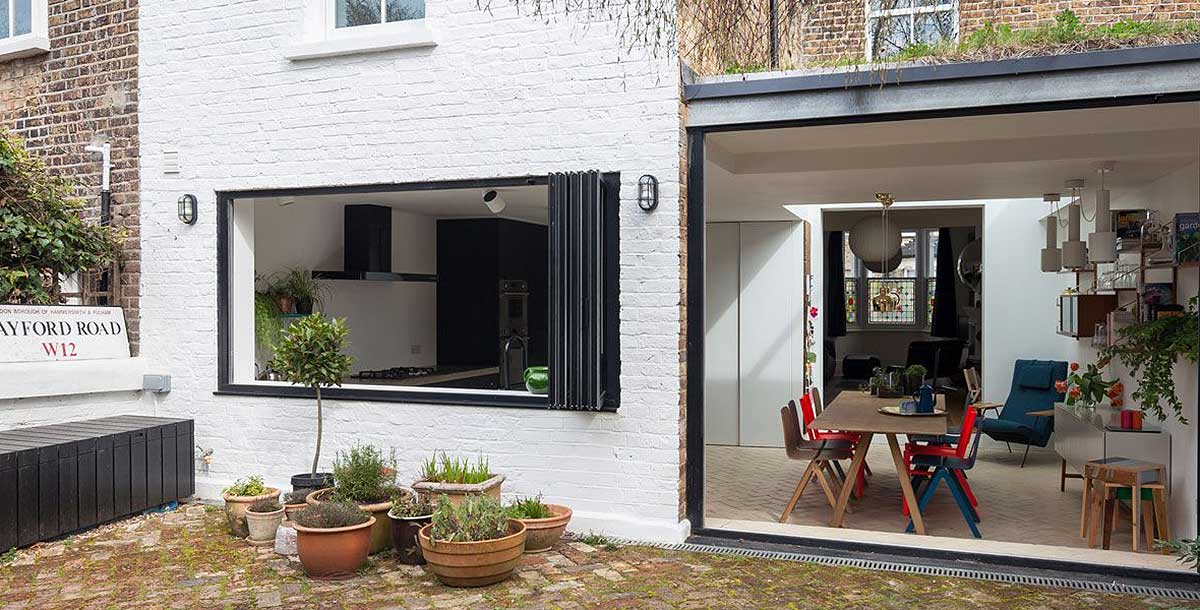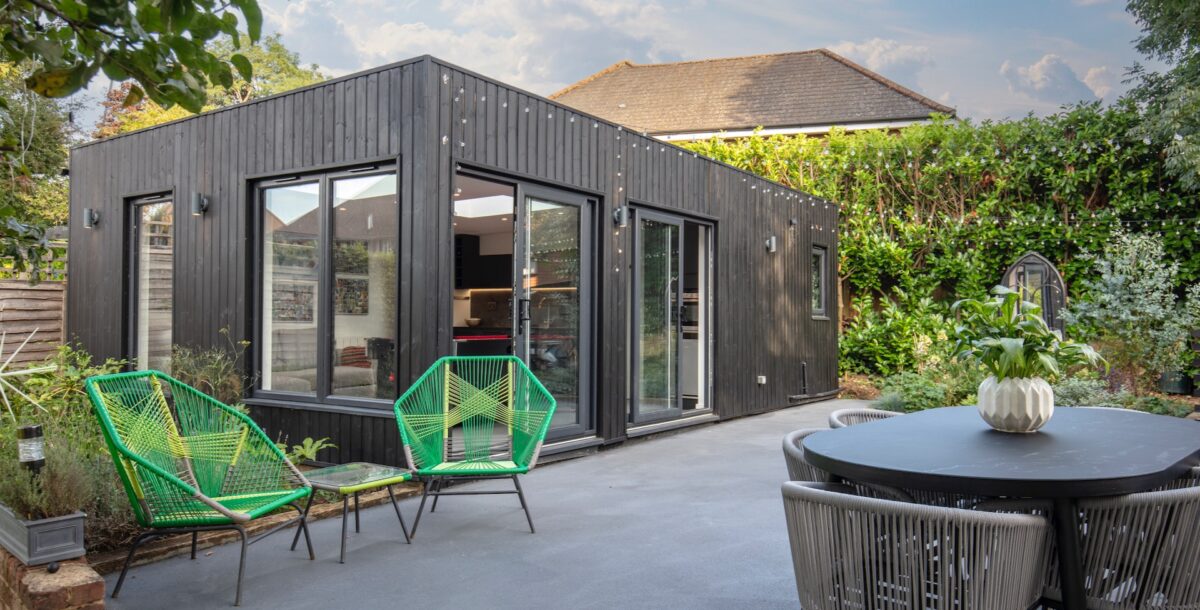Kunle Barker’s 10 steps to renovation success
The property expert and TV presenter's step-by-step guide to a successful home renovation
Ensure your home improvements project comes in on time, on budget and is everything you hoped it would be, with property expert and TV presenter Kunle Barker’s renovation guide.
1. Take your time
Planning your project well in advance of the construction work will help ensure everything runs smoothly. ‘Pre-construction is the time to make as many decisions as possible,’ says Wessley Johnson, managing director at IH Flagship.
Elements to consider and confirm include: your budget; hiring a project team; approving the design and layout; submitting a planning application (if required); choosing materials and even the interior design elements, such as the colour schemes. Take as much time as you need at this stage and avoid making decisions later in the process, which will almost certainly extend the project completion date and incur extra costs.

Photo: Matt Chisnall
2. Hire an architect
Hire an architect Whether you need an architect, and the precise nature of their role on your renovation, will depend on the scale and complexity of the project. In most cases, at the very least, it’s worth consulting with a professional who has experience of working on a similar build.
‘An architect will add value in many different ways,’ say Linda Stevens, head of client services at RIBA.
‘They will make the best use of your space, help choose a builder, manage planning applications, select materials and get the best prices from your supply chain.’ Use RIBA’s online architect search feature to find a practice in your area.
3. Provide a clear brief
It’s important for clients to talk about what success looks like,’ says Chris Dyson, founder of Chris Dyson Architects. ‘If your build team doesn’t understand the priorities, it’s more difficult for them to deliver exactly what you’re hoping for.’
Be clear about what’s important to you and what you want to achieve. Outline the budget, your design and build aspirations, and when you want the project delivered by. ‘It is fine to assign equal importance to each of these factors, but make sure this is communicated to your architect and/or builder,’ adds Dyson.
4. Stick to a schedule
Drawing up a document detailing the costs and the timeline for your renovation has advantages. ‘Compile a schedule of works, so that your build team is 100% clear about what’s included in your contract sum,’ says Jay Bhudia, chartered quantity surveyor at JB Cost Associates. This can be created by an architect or a specialist quantity surveyor and will form part of your construction contract. It will be referred to by your project manager if there are any questions over how works should be completed, who should complete them and for how much.
As the schedule contains cost details for each section of your project, this can be used to calculate the value of the build that has been completed. This valuation will help you assess how much to pay your builder, ensuring that you only pay for each completed stage. It also reveals important information about when to order the materials you’ll need: you wouldn’t want supplies arriving too early or too late to site.
5. Find a brilliant builder
Choosing a builder for your project is one of the most important decisions you will make. ‘Look for an experienced tradesperson with a track record of delivering projects that are similar to yours,’ says Johnson.
Local recommendations from friends, family and neighbours are a good way to start your search, but make thorough background checks before hiring anyone. Speak to previous clients; visit a completed project and one that’s in progress as proof of their credentials. ‘Avoid making a decision based solely on the price you’ve been quoted, as often the best builder will not be the cheapest,’ Johnson adds. Start by looking at The Federation of Master Builders’ database.
6. Prepare the paperwork
It’s vital to have a construction contract in place before any work gets underway and avoid hiring a builder or contractor that is reluctant to use one. Make sure it includes everything you would like done. This might include the supply of materials and the removal and disposal of waste. The document sets out the key responsibilities of both client and contractor, which should mitigate disputes arising due to a lack of clear guidelines. It also details how any disputes that crop up should be managed, and clearly defines the roles and responsibilities of each party. Try the RIBA Domestic Building Contract, which costs from £25.
7. Choose the best manager
There are many options available when it comes to the project management of your build. You may wish to take on this role yourself, particularly if you have previous experience and the work is fairly simple. If you have hired an architect, they could take on all or part of the role. Or you could hire someone who specialises in this area. ‘The project manager is a key member of the build team, especially where the renovation is complex and involves specialist consultants and contractors,’ says David Roden, director at David Roden Architects.
If you manage your own project, it is still worth consulting with a project manager to help you at the beginning of the process. Be realistic about your level of experience and the amount of time you can devote, as project managing is time-consuming. If you hire a full-time person, expect to pay around five per cent of your total project cost on their fee.
8. Check the quality
Ensure that regular inspections are made at key stages. ‘Attend the site to confirm that the setting out and construction of all the elements is true to the design and specification requirements. The omission or substitution of any part can have a detrimental effect on the overall quality of the build, as can the misalignment of structural elements or masonry,’ explains Rhona Waugh, director at Found Associates. To the untrained eye, structural errors are not as easy to spot as something such as bad tiling. So your architect or project manager will need to be on site for these stages.
9. Use workflow software
It can be useful to have a visual representation of your renovation’s timeline. A Gannt chart app provides a simple, graphic way to plot the progress of a project that makes it easy to see when a schedule is on (or off) course. You can also use this type of software to indicate whether the work is being carried out in the correct sequence.
‘It should make clear key milestones and who is responsible for them. Otherwise, it’s easy to overlook a small decision that may have far-reaching repercussions,’ says Alex Bilton, director at architect ABHR_A.
10. Stay on budget
Make sure that at any point in your project you know what you have spent, what you forecast you would spend and what the predicted end-of-project cost is. Update figures weekly and include all increases in cost as they arise. ‘Stay on top of your spend, so that you can make quick adjustments to bring your renovation back in budget if you need to,’ says Jonny Callard, director at chartered building surveyors Thomas & Thomas.
Include a contingency figure, 15% of your estimated total project spend, and make sure all of the costs are confirmed before you start any work.









